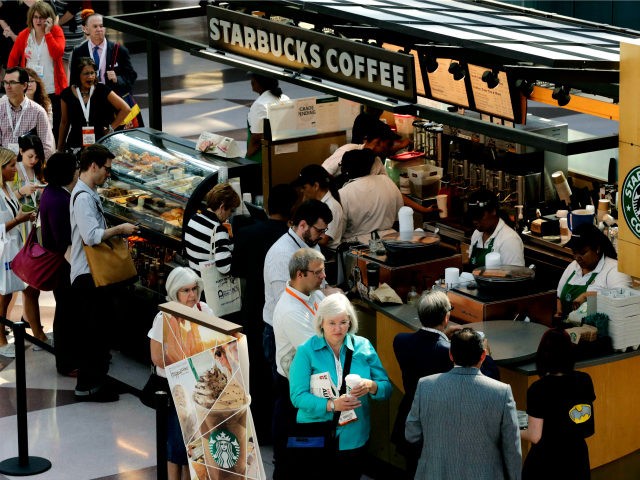Starbucks’ Pumpkin Spice Latte (PSL) is already back in stores, and in honor of the drink’s annual arrival last Tuesday, the Washington Post published a bizarre piece alerting readers of “the violent history behind your favorite Starbucks latte,” which reportedly includes “war, genocide and slavery.”
“PSL is back, and so is its connection to a centuries old genocide,” writes Gillian Brockell of the Washington Post. “Underneath those fuzzy-sweater vibes, the spices in ‘the PSL’ have a dark history.”
“It’s a story of war, genocide and slavery,” affirms Brockell.
The WaPo piece begins by briefly touching upon the history of an ingredient found in the PSL, nutmeg, which is native to the Banda Islands — today’s Indonesia — and had made the Bandanese, who traded the spices, rich during the Middle Ages.
Brockell’s history lesson then segues into the late 16th, early 17th century, to divulge European explorers arriving on the islands, which then reportedly resulted in war, slavery, and “near-extinction of the Bandanese.”
A section of the WaPo piece reads as follows:
The Dutch showed up in 1599, and everything got gruesome soon afterward. They seized the islands, built a fort and informed the Bandanese they were no longer allowed to trade with anyone else, according to historian Vincent C. Loth. The Bandanese signed contracts agreeing to the arrangement, though it is unclear if they understood what they were agreeing to, Loth wrote. They ignored the contracts anyway, continuing to trade with whomever they always had, plus a new partner on the scene — the English.
This led to a number of violent skirmishes between the Dutch and the Bandanese, Loth wrote. Then in 1621, Dutch Governor-General Jan Pieterszoon Coen led 2,000 troops on an assault on the Bandanese. Their leaders were beheaded, and the wealthy were enslaved and sent overseas. The remaining inhabitants fled into the mountains, where, over the following months, nearly all met one of three fates: They were murdered in Dutch attacks, starved to death, or jumped off cliffs in despair.
“By the end of the massacre, only about 1,000 of an estimated 15,000 Bandanese had survived,” notes the WaPo piece. “Some escaped to other islands, where their descendants still live, while others were enslaved to teach the Dutch how to cultivate nutmeg themselves.”
Then, in what many would consider a predictable turn of events — given today’s political climate and heavy emphasis on historical misfortunes — the piece goes on to associate the history of nutmeg to the United States.
“The matter was settled in 1667 when the English agreed to end its claims to the Bandas in exchange for an island the Dutch considered worthless: Manhattan,” writes Brockell, before concluding with the friendly reminder that today’s Manhattan is home to 240 Starbucks stores, which are all “peddling pumpkin-spice lattes at this very moment.”
So, the next time you find yourself enjoying your favorite fall drink, remember, you’re probably aiding the violence perpetrated against the indigenous peoples of the Banda Islands in the early 17th century.
You can follow Alana Mastrangelo on Twitter at @ARmastrangelo, on Parler at @alana, and on Instagram.

COMMENTS
Please let us know if you're having issues with commenting.